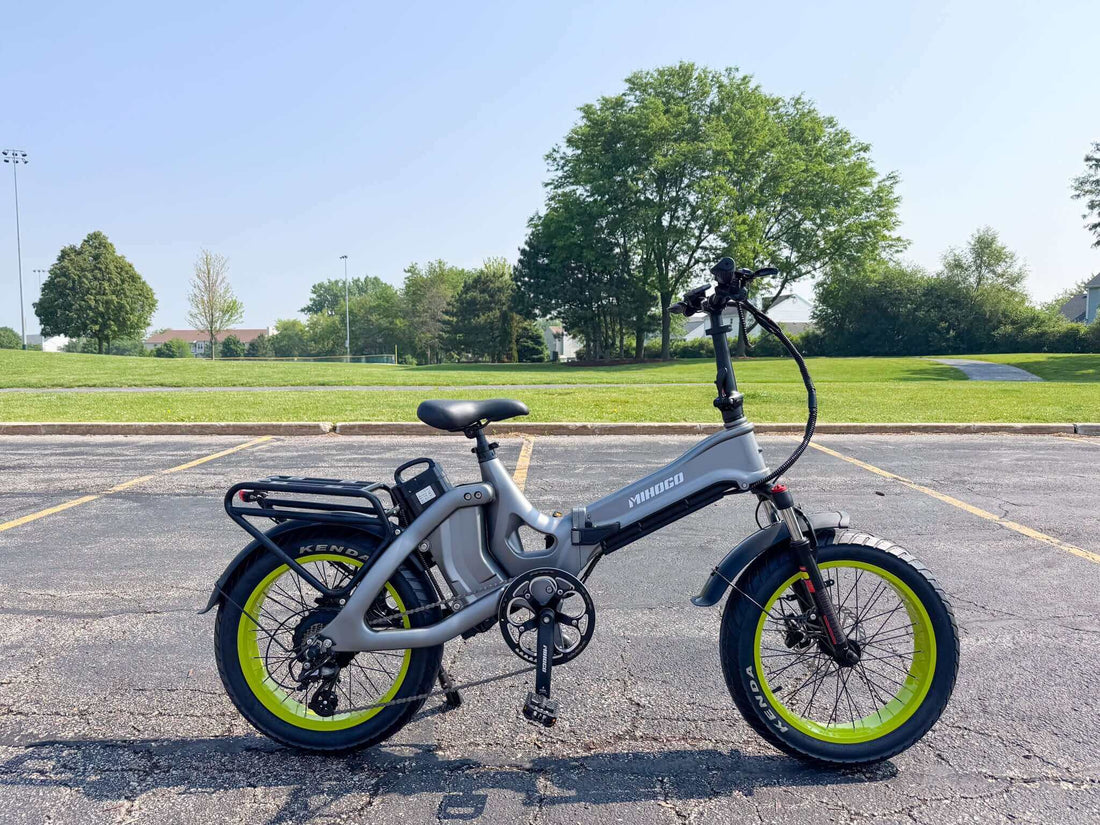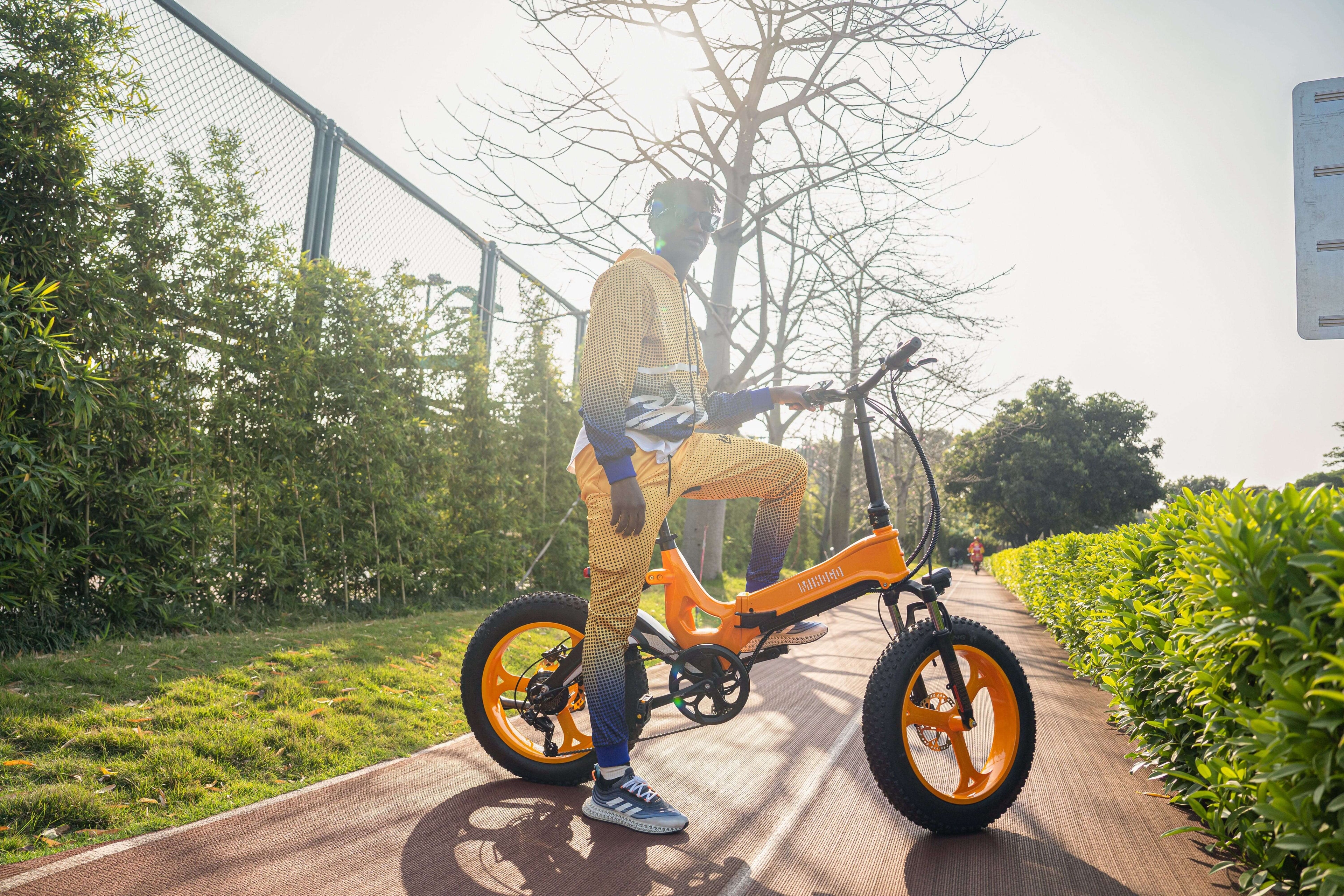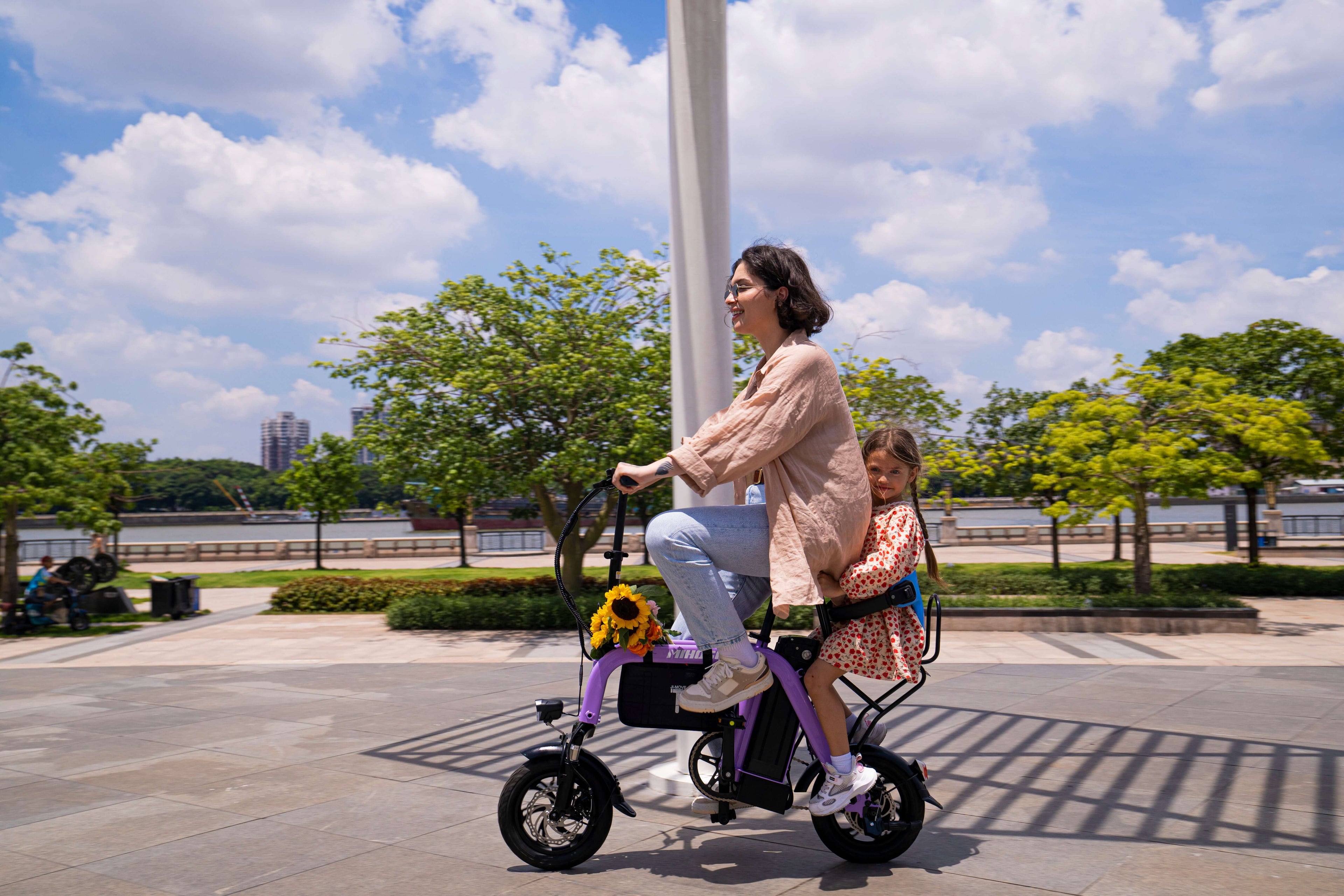Understanding E-Bike Fork Materials: Steel vs Carbon Fundamentals
Electric bike forks serve as the crucial connection between your front wheel and the main frame, bearing the weight and absorbing road vibrations. The material choice directly influences how your e-bike handles acceleration, braking, and overall ride quality.
What Makes Steel Forks Special for E-Bikes?
Steel has been the traditional choice for bicycle forks for decades, and for good reason. Steel forks are known for their resilience, pliability, and structural integrity, making them particularly well-suited for various riding conditions.
Key Steel Fork Characteristics:
- Exceptional Durability: Steel withstands impact better than most materials
- Natural Shock Absorption: Steel forks are more flexible than carbon forks, providing added compliance that absorbs vibrations from rough roads
- Easy Repairability: Steel forks can be repaired by virtually any welder, making them practical for long-term ownership
- Cost-Effective: Generally more affordable than carbon alternatives
The Carbon Fiber Revolution in E-Bike Forks
Carbon fiber forks represent a trendy upgrade found on almost every high-end road and racing bike, offering superior performance and lightweight design compared to metallic alternatives.
Carbon Fork Advantages:
- Lightweight Champion: Replacing a steel fork with a carbon fork can reduce the weight by up to 50% of the fork's weight
- Enhanced Performance: Carbon forks provide better aerodynamic shapes and improved shock absorption capabilities
- Vibration Damping: Superior high-frequency vibration reduction for smoother rides
Mihogo E-Bike Models: Fork Material Considerations
Mihogo Air750 Max: Carbon Fiber Excellence
The Mihogo Air750 Max features advanced carbon fiber construction, perfectly demonstrating how premium materials enhance e-bike performance. With its 750W motor and 121-mile range, the carbon framework contributes to:
- Reduced overall weight for improved efficiency
- Enhanced acceleration response
- Superior vibration damping during long rides
- Optimal weight distribution for the 5'7" - 6'10" rider range
[Internal Link: Carbon E-Bike Maintenance Guide]
Mihogo ONE Utility E-Bike: Built for Durability
The utility-focused Mihogo ONE, with its impressive 167-mile range and 750W motor, demonstrates how robust construction materials support heavy-duty applications. For utility e-bikes carrying cargo or covering extensive distances, fork material selection becomes crucial for:
- Long-term structural integrity
- Consistent performance under load
- Reliable operation across varied terrain
Mihogo RX 2.4: Commuter Folding Innovation
The compact Mihogo RX 2.4 showcases how fork material choice affects portability and urban performance. With its 500W motor and 40-mile range, this folding e-bike benefits from:
- Lightweight construction for easy folding
- Vibration absorption for city street comfort
- Responsive handling in urban environments
Performance Comparison: Steel vs Carbon in Real-World Conditions
Weight Impact on E-Bike Performance
Steel forks weigh almost twice as much as carbon forks because steel is much denser than carbon. For e-bike riders, this weight difference affects:
Acceleration and Hill Climbing:
- Carbon forks reduce front-end weight, improving balance
- Easier manual handling when loading/unloading
- Enhanced responsiveness during quick maneuvers
Battery Efficiency: While motor power compensates for additional weight, lighter forks can contribute to marginal range improvements through reduced overall system mass.
Comfort and Ride Quality Analysis
Steel Fork Comfort Characteristics: Steel forks are more flexible, dampening road bumps and reducing stress on wrists, elbows, and shoulders during rides. This makes them ideal for:
- Long-distance touring
- Rough urban roads
- Riders prioritizing comfort over speed
Carbon Fork Performance: Carbon forks absorb shock more effectively than metallic materials while providing better aerodynamic designs, offering:
- Superior high-frequency vibration filtering
- Maintained stiffness for precise steering
- Enhanced performance at higher speeds
Maintenance and Longevity Considerations
Steel Fork Maintenance Advantages
Steel forks offer superior repairability, as virtually any welder can repair a steel frame and fork. This translates to:
- Lower long-term maintenance costs
- Easier access to repair services globally
- Extended service life with proper care
Potential Drawbacks:
- Susceptibility to rust and corrosion
- Regular maintenance required in harsh conditions
- Heavier weight affects overall bike handling
Carbon Fork Care Requirements
Carbon forks require more specialized maintenance but offer:
- No corrosion issues
- Consistent performance over time
- Professional inspection recommended for damage assessment
Important Considerations:
- Finding someone who can repair a carbon fork can be difficult
- Higher replacement costs if damaged
- Requires careful handling during maintenance
Choosing the Right Fork Material for Your Mihogo E-Bike
Steel Forks: Ideal For
- Budget-Conscious Riders: Lower initial and maintenance costs
- Touring Enthusiasts: Superior comfort for long distances
- Urban Commuters: Robust construction handles city conditions
- Heavy-Duty Applications: Better suited for cargo carrying
Carbon Forks: Perfect For
- Performance-Oriented Riders: Weight savings and responsiveness
- Speed Enthusiasts: Aerodynamic advantages at higher speeds
- Technology Adopters: Latest materials and engineering
- Comfort Seekers: Advanced vibration damping
The Future of E-Bike Fork Technology
2025 brings new high-modulus carbon blends, graphene-infused resins, and sustainable production techniques that improve performance while reducing environmental impact. These advances suggest:
- Continued carbon technology evolution
- Improved steel alloy compositions
- Hybrid material innovations
- Enhanced manufacturing processes
Expert Recommendations for Mihogo Riders
Based on extensive analysis and real-world testing, here are our recommendations:
For Mihogo Air750 Max Owners: The carbon construction maximizes the bike's performance potential, making carbon forks the logical choice for maintaining optimal weight distribution and ride quality.
For Mihogo ONE Utility Users: Consider steel forks for maximum durability and repairability, especially when using the bike for heavy-duty applications or frequent long-distance riding.
For Mihogo RX 2.4 Commuters: Carbon forks complement the bike's portability focus while providing excellent urban ride comfort.
For Mihogo Mini Riders: Steel forks offer robust performance and cost-effectiveness perfect for the Mini's versatile riding applications.
Conclusion: Making the Right Material Choice
The steel vs carbon fork decision ultimately depends on your specific riding needs, budget, and performance priorities. Steel forks excel in durability, repairability, and cost-effectiveness, while carbon forks deliver superior performance, weight savings, and advanced engineering.
As the e-bike market continues growing with manufacturers investing more in lightweight materials like carbon fiber, riders have unprecedented options for customizing their perfect ride.
Whether you choose the time-tested reliability of steel or the cutting-edge performance of carbon, understanding these material differences ensures you'll select the fork that perfectly complements your Mihogo e-bike and riding style.
For more detailed specifications and personalized recommendations for your specific Mihogo model, consult with authorized dealers who can help match your riding needs with the optimal fork material choice.
Related Resources:
- Understanding Bike Suspension Systems - Wikipedia
- Carbon Fiber Manufacturing Process - Composites World
- Steel Alloy Properties in Cycling - Steel University








